Automation of tasks is becoming increasingly important, especially in software applications like Microsoft Excel. The Microsoft Copilot offers a variety of functions to assist you with data analysis, editing, and visualization. In this tutorial, I will show you how to effectively use the Copilot in Excel and what possibilities and challenges arise. Even though the Copilot is still in development and not perfect, there are already exciting approaches worth trying out.
Main Insights
- The Microsoft Copilot in Excel is still in the testing phase and offers many cool features as well as current limitations.
- It is currently only available in the English version, which can make it difficult for German-speaking users to use.
- By simply copying data into the online version of Excel, the Copilot can be started.
- There are basic functions for data analysis, such as adding new columns, sorting and filtering data, as well as creating charts and pivot tables.
Step-by-Step Guide
Getting Started with the Copilot in Excel
Open your Excel application and create a new table or upload an existing table. You can also manually create a small dataset. Let's start with an example. For instance, you can create a simple Excel list with five to six rows so that we can work with the Copilot's functions.
Using the Online Version
Since the Copilot currently only works in the English version, I recommend accessing it through Excel's online apps. Simply go to your browser and open the online version of Excel. Here you can easily paste the previously created list and activate the Copilot.
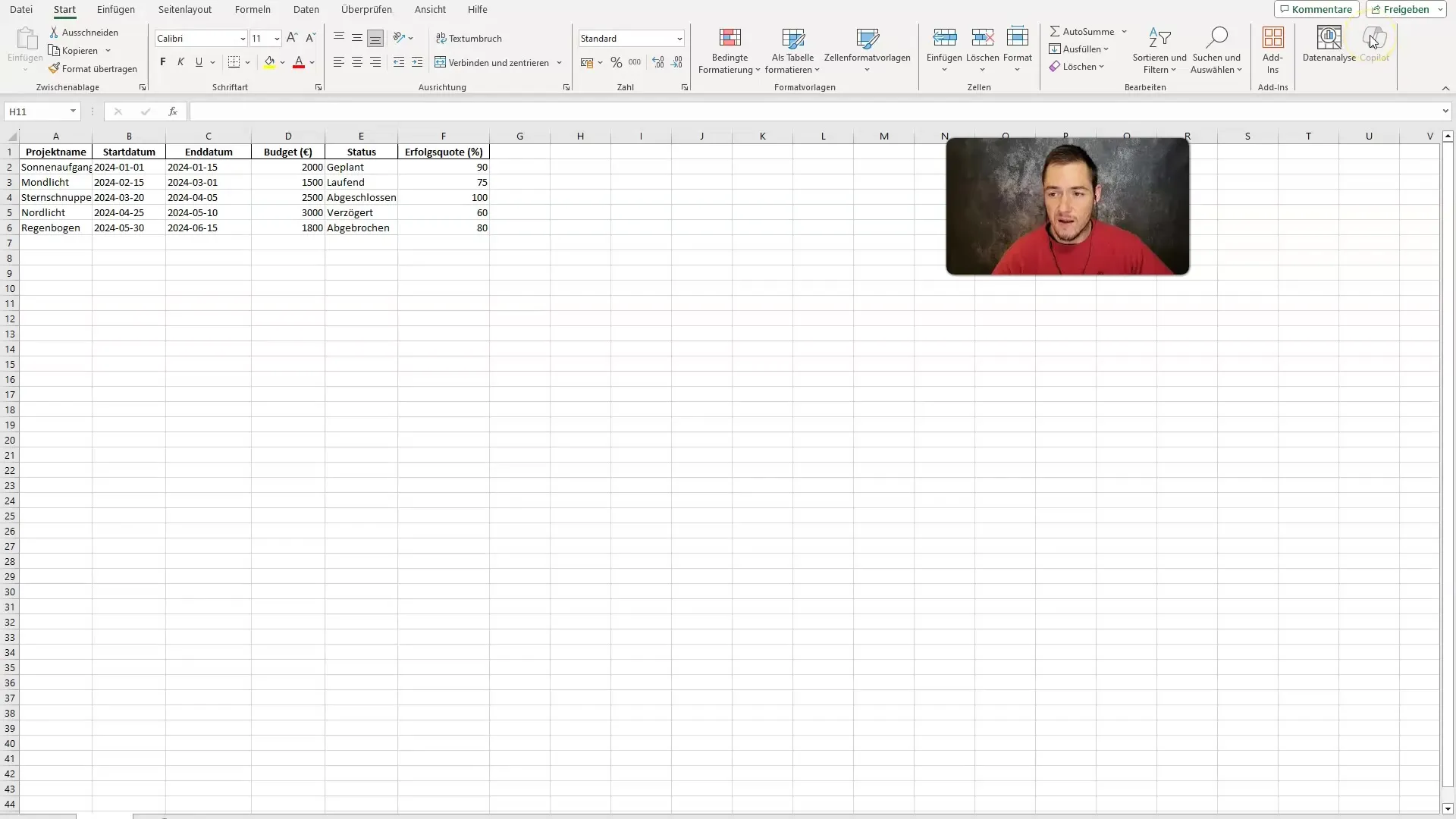
First Access to the Copilot
After pasting your data in the online version of Excel, activate the Copilot by clicking on it. You will notice that the functions are currently only available as a preview. However, you can see the possibilities that are being offered to you.
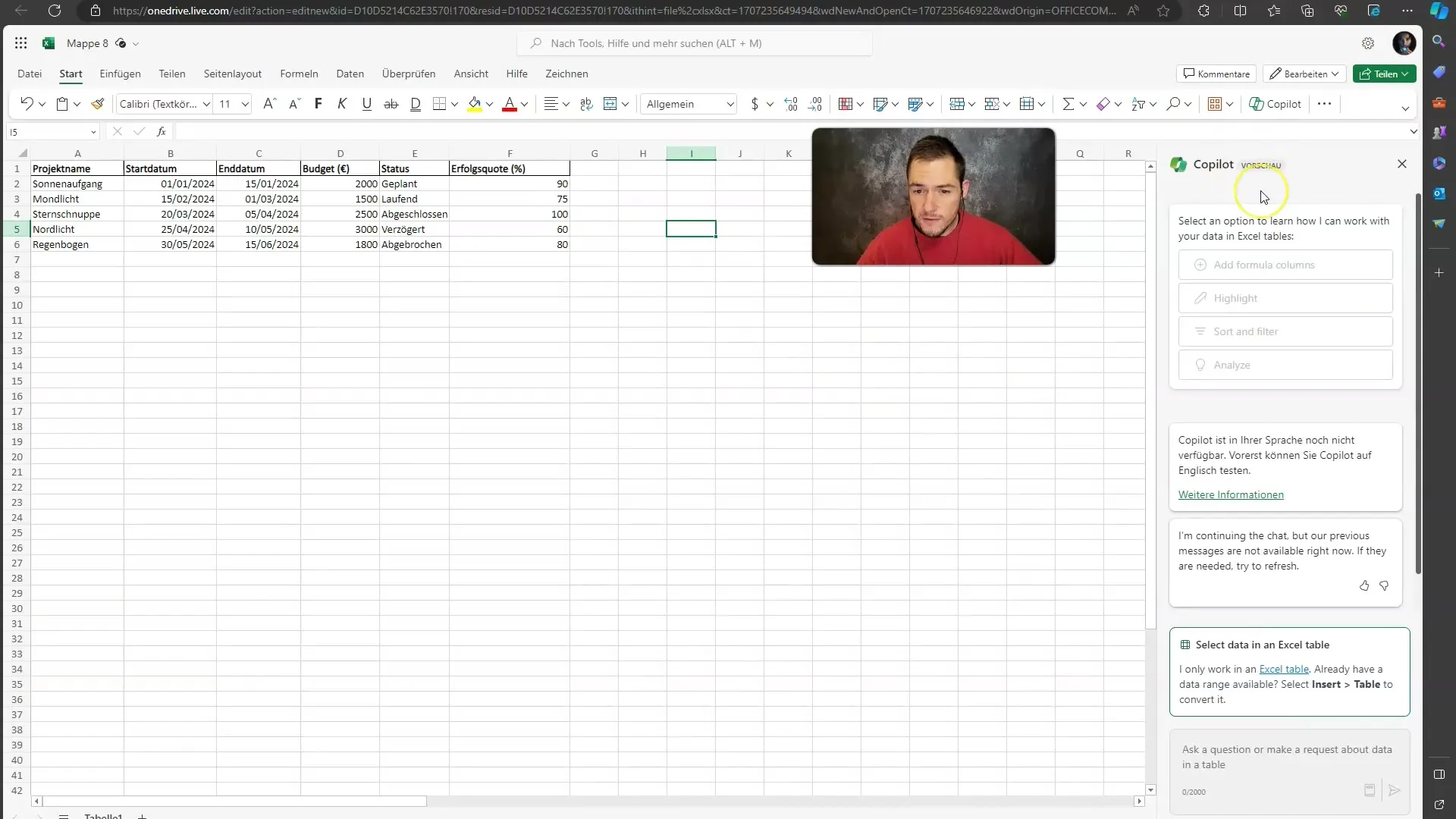
Converting Data
An important step before working with the Copilot is to ensure that your data is in the correct format. If necessary, convert your list by clicking on the "Convert" button. This will display a dialog box where you can confirm the conversion.
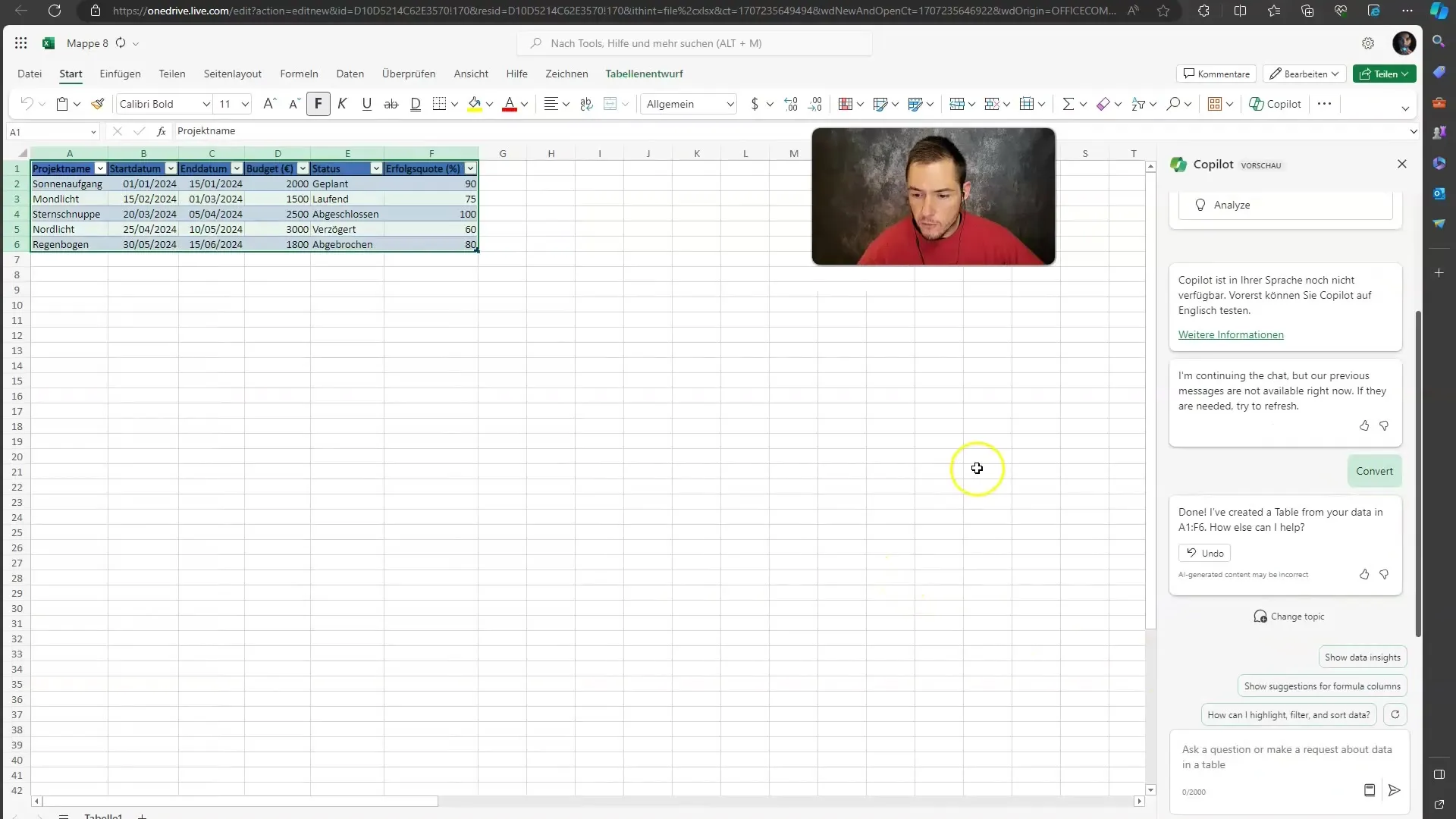
Adding New Columns and Calculations
Now that your data is converted, you can start interacting with the Copilot. For example, you can specify that you want to add a new column to compare the budget with a success rate. Simply enter your desired prompt, such as "Add a column to compare the budget and success rate."
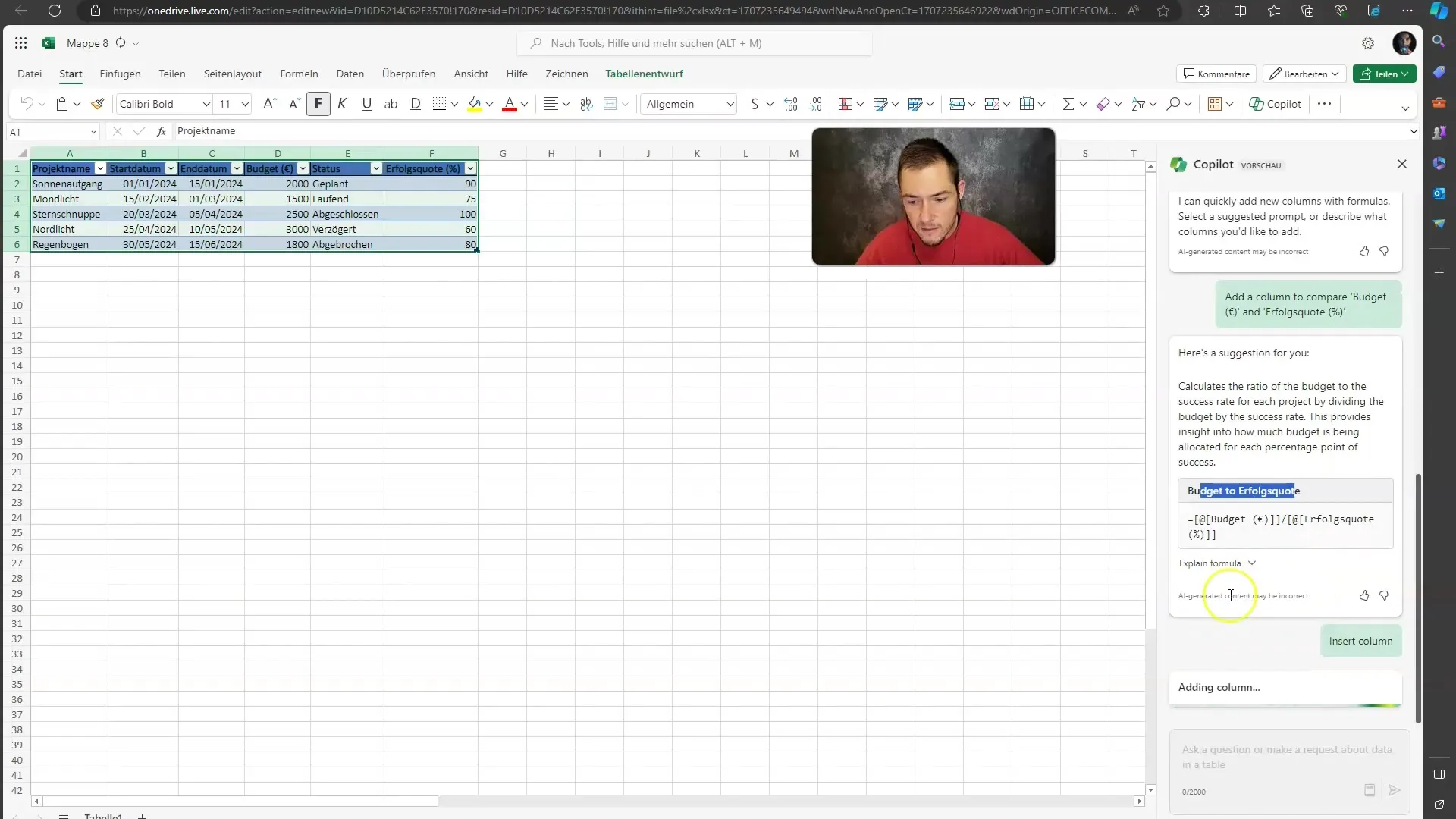
Using the Highlight Feature
The Copilot also allows you to highlight certain data. For example, you can filter for items with a budget over 2000 euros. Simply say, "Highlight all budgets over 1999 euros." The Copilot will highlight the corresponding rows in your list.
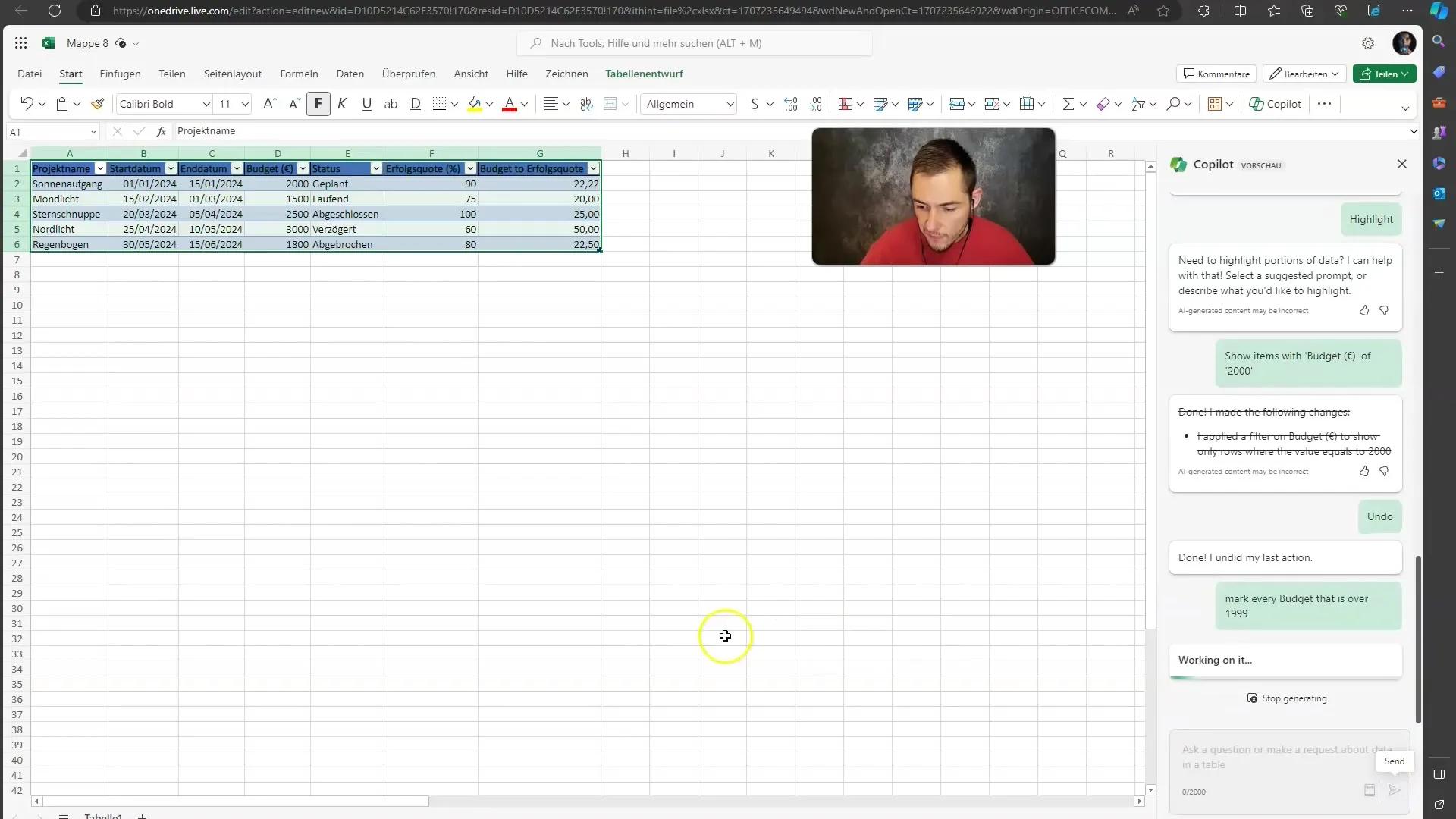
Sorting and Filtering Data
The capabilities of the Copilot go beyond simple highlighting. You can also sort and filter data. Open the sorting dialog by formally requesting an inquiry from the Copilot. For example, say, "Sort the list by budget."
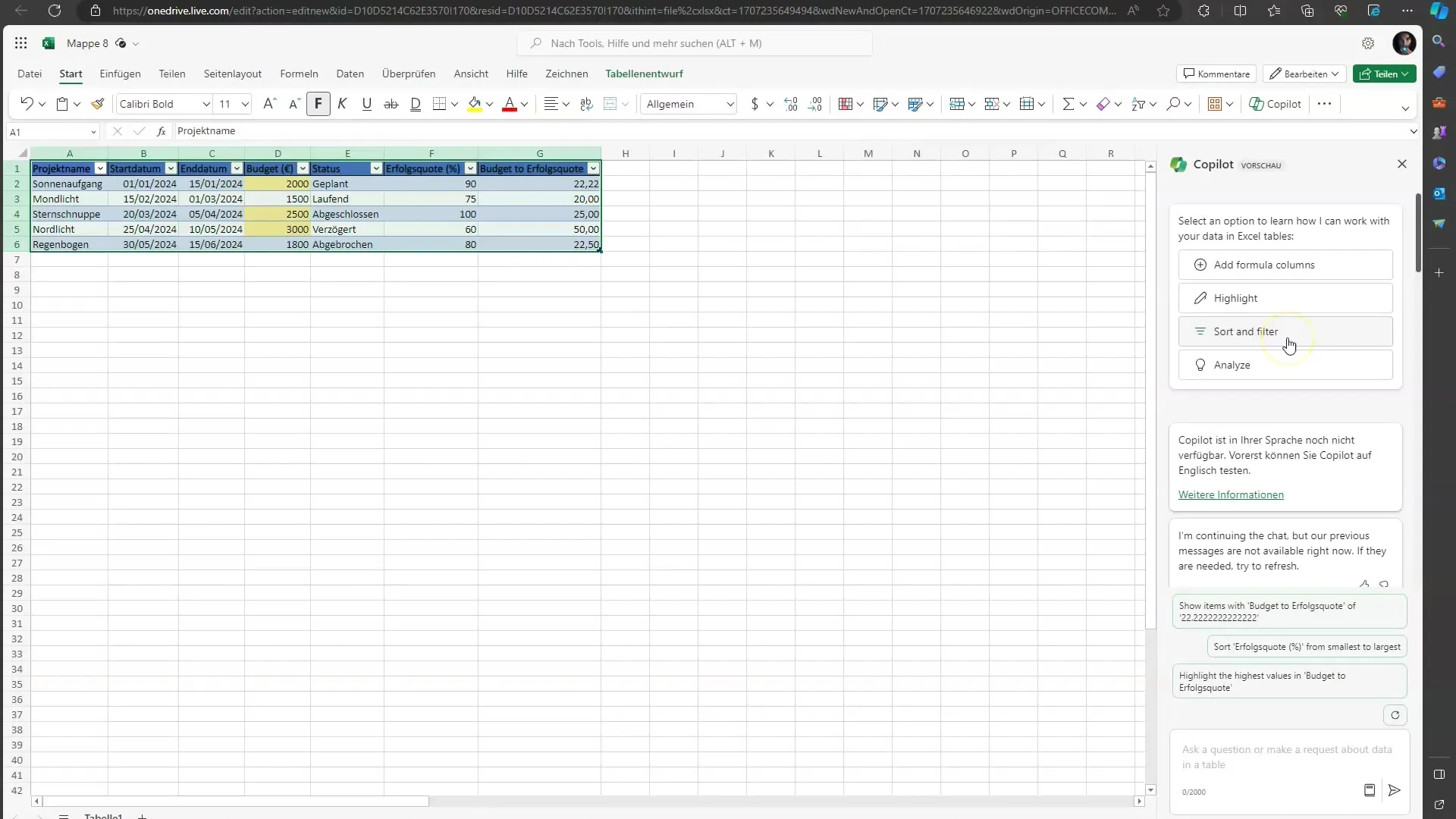
Creating Charts and Pivot Tables
Creating charts and pivot tables is one of the most exciting features of the Copilot. Enter a command like "Create a bar chart for projects based on the budget," and the Copilot will help you create visual representations of your data.
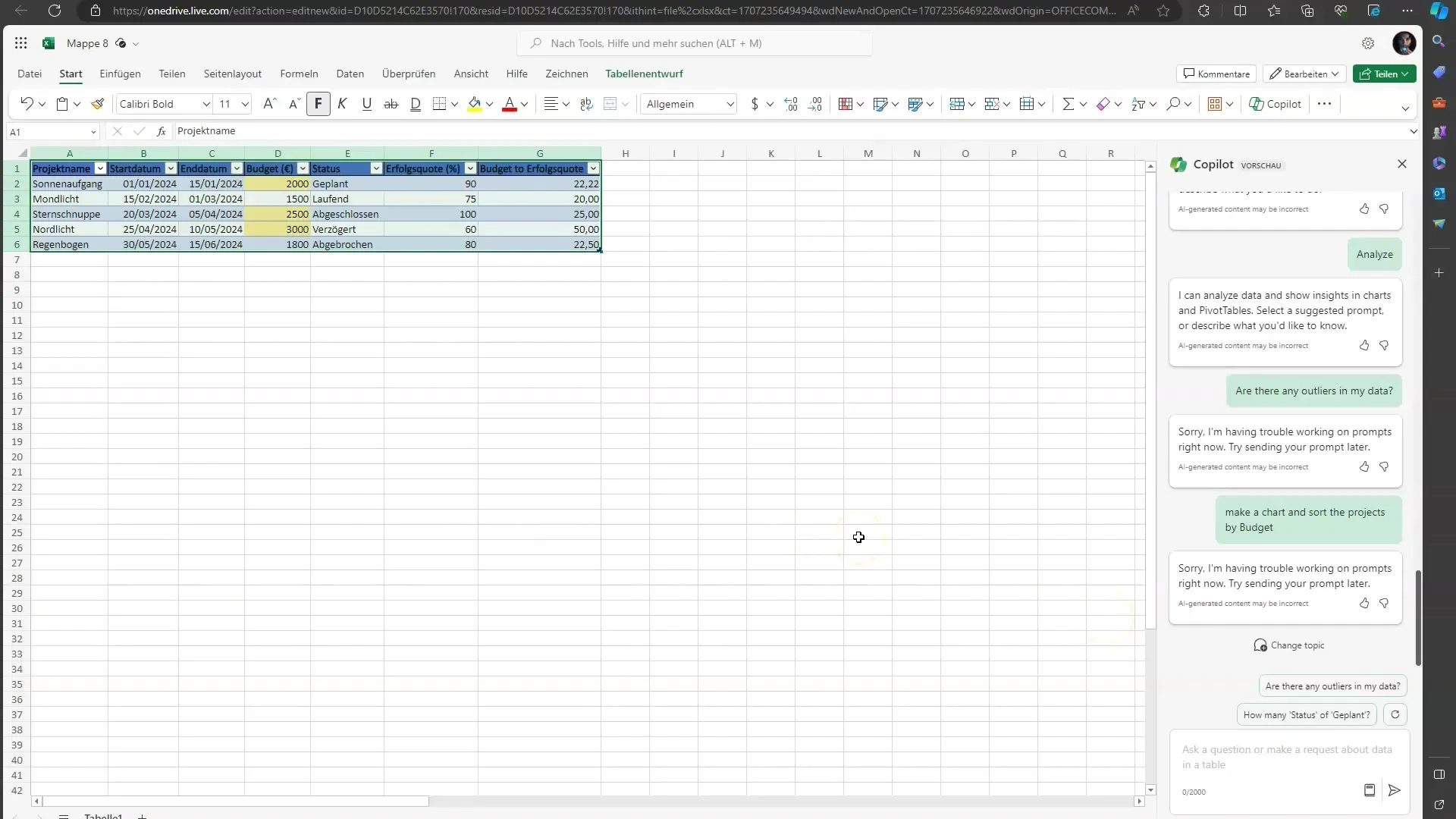
Data Insights and Visualizations
Unfortunately, we currently have to note that the data visualization feature does not always work reliably. You can try clicking on "Show data insights" to get an analysis of your data from Excel. However, if the feature does not work as desired, this can be frustrating.
Summary of Experiences
It’s important to not only recognize the capabilities of Copilot, but also its current limits. Sometimes, the functionality can unexpectedly fail, as I have experienced in my tests. So, it's important to have patience and use the tools according to their current development.
Concluding Remarks
So, as you take your first steps with Microsoft Copilot in Excel, enjoy the capabilities, but also be warned: there are some challenges to expect. Test it yourself and see how the functions work for your specific needs.
Summary
Microsoft Copilot in Excel offers interesting approaches to data processing, but it is accompanied by many limitations that its users must currently consider. While some functions work well, there are also many uncertainties that need to be taken into account.
Frequently Asked Questions
When will Microsoft Copilot be available in German language?There is no specific date yet for the release in German language.
Which features of Copilot currently work best?Creating new columns and easily highlighting data in small lists work most reliably.
Can I use Copilot in Excel offline?No, currently Copilot is only available in the online version of Excel.
How can I provide feedback on the Copilot features?You can submit feedback directly through the feedback feature in Excel.


